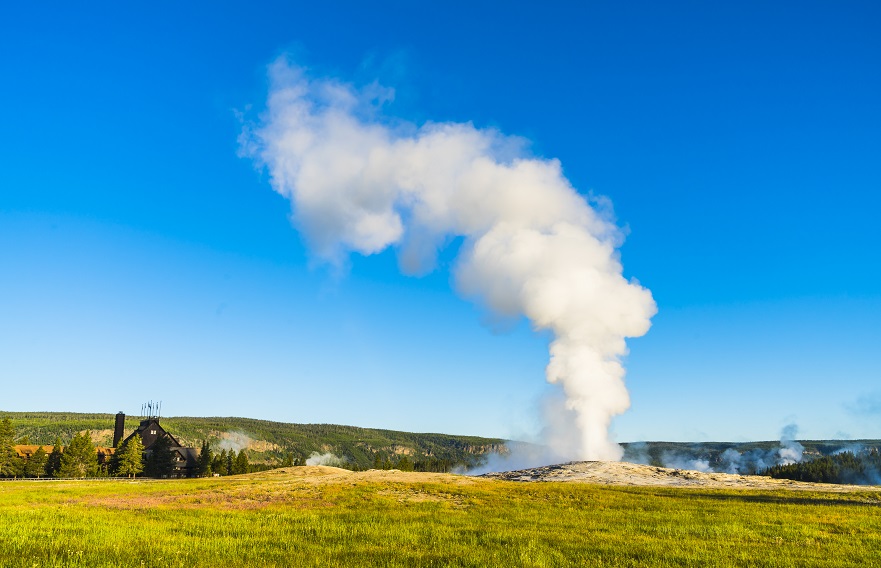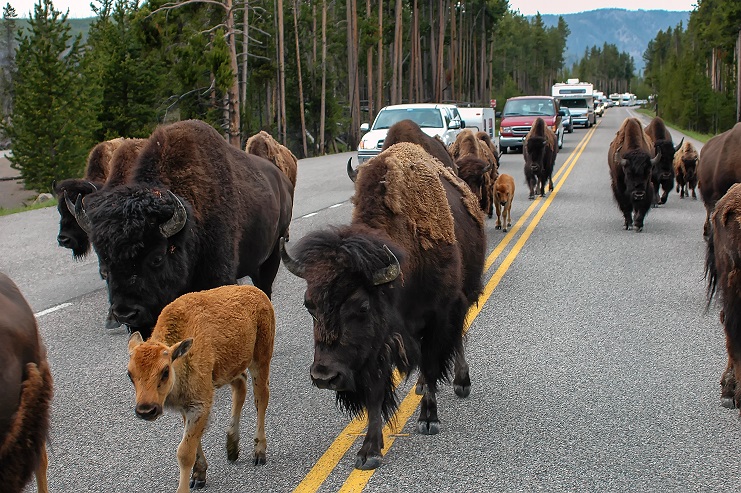America’s first National Park celebrated its 150th anniversary last year, and as such Yellowstone National Park was often in the spotlight in 2022. When historic flooding swept out buildings and roadways in June, even more attention was brought to this national treasure. Within its 2.2 million acres, there are almost otherworldly geologic features, wildlife galore, active geysers and beautiful scenery. I was fortunate enough to visit for the first time in May 2022. There was still snowpack and it was so cold, I had to buy some extra layers because I under packed. That said, my wildlife sightings included seven bears (yes, seven!), countless bison, pronghorn sheep and many geysers, including Old Faithful.

History
Like most places in America, people were in the region long before anyone conceived of designating parks, dating back more than 11,000 years, as proven by archeological sites, trails and oral histories. The Tukudika, or “Sheep Eaters,” are probably the most well-known group of Native Americans to use the park, but many others have, too. If we fast forward to March 1, 1872, this is when President Ulysses S. Grant signed the historic Yellowstone National Park Protection Act into law and the world’s first National Park was born. Eventually, the U.S. Army managed it from 1886 through 1918 (the National Park Service was established in 1916).
Through the years, the park has weathered everything from underfunding to overcrowding, but it remains one of the most popular parks in the country, with millions of people visiting from around the world every year. I was warned to be ready for crowds before I visited, but it turns out cold May weather is something of a deterrent.
Animal Encounters
There is something magical about unexpectedly spotting a bear foraging up on a hill, bison blocking traffic for minutes at a time and counting down the minutes with strangers to see Old Faithful erupt. And those are only the most obvious of attractions. Whether you take advantage of one of the 12 campgrounds at the park, head out for backcountry camping, stay in one of nine lodges in the park, or visit on a day trip, it’s difficult not to be awed by its beauty.

Did You Know?
Yellowstone has a park “pledge.” It’s a personal promise you make to yourself and the park. At the very least, it’s a reminder of what to do and what not to do.
“I pledge to protect Yellowstone National Park. I will act responsibly and safely, set a good example for others, and share my love of the park and all the things that make it special.”
10 Tenets
- Give wildlife room, use a zoom. The safest way to view wildlife is through a telephoto lens, a spotting scope, or a pair of binoculars. Park animals are wild and dangerous. Bison, bears, and elk have injured and killed people. Do not approach, encircle, follow, or feed any animal. Stay 100 yards (91 m) from bears and wolves. Stay 25 yards (23 m) from all other animals.
- Follow the beaten path. In thermal areas, boardwalks take you to amazing places, protect the park, and keep you safe. People have been severely burned and killed after leaving the boardwalk or reaching into hot water. Geysers, mud pots, and hot springs are delicate. Don’t throw anything into any hydrothermal features, touch them, or change them in any way.
- Be bear aware. Carry bear spray and know how to use it. Be alert, make noise, hike in groups, and stay on trails. If you encounter a bear, never run.
- Watch out for water. Use caution around rivers, lakes, and streams. They are cold and fast and people have died from hypothermia and drowning after accidentally falling into frigid water.
- Practice safe selfies. No picture is worth hurting yourself, others, or the park. Be aware of your surroundings whether near wildlife, thermal areas, roads, or steep cliffs.
- Enjoy the ride. Drive defensively and cautiously. This park has hazards on the road you aren’t used to at home (like 2,000-lb. bison). Follow speed limits and stay with your car if you’re stuck in a wildlife jam. When you want to take a photo or look around, use pullouts to avoid blocking traffic and damaging vegetation. Turn off your vehicle when stopped in a traffic line.
- Leave your drone at home. Drones are not allowed in Yellowstone National Park. They disturb wildlife, interfere with park operations, and bother people trying to enjoy natural sounds.
- Clean, Drain, Dry. Help us prevent the spread of aquatic invasive species. Clean, drain, and dry your watercraft and fishing gear before you come into the park or move from one body of water to another.
- Stash your trash. Recycle what you can and put the rest in bear-resistant trash cans so animals can’t get to it. If a can happens to be full, find another.
- Leave what you find. Don’t take antlers, artifacts, rocks, plants, or other objects from the park.
This article, written by Kim Foley MacKinnon, first appeared in the Fall 2022 issue of Girl Camper Magazine.
More Girl Camper
Girl Camper Magazine: Subscribe to Girl Camper Magazine here! Girl Camper Magazine
Events: Check out upcoming Girl Camper Events – you can attend events in any chapter! https://girlcamper.com/events/
Main GC Facebook Group – Join over 350,000 like-minded women in our public Facebook group! Girl Camper FB Group




